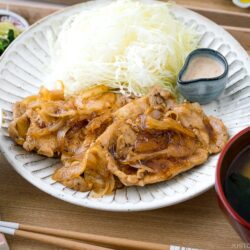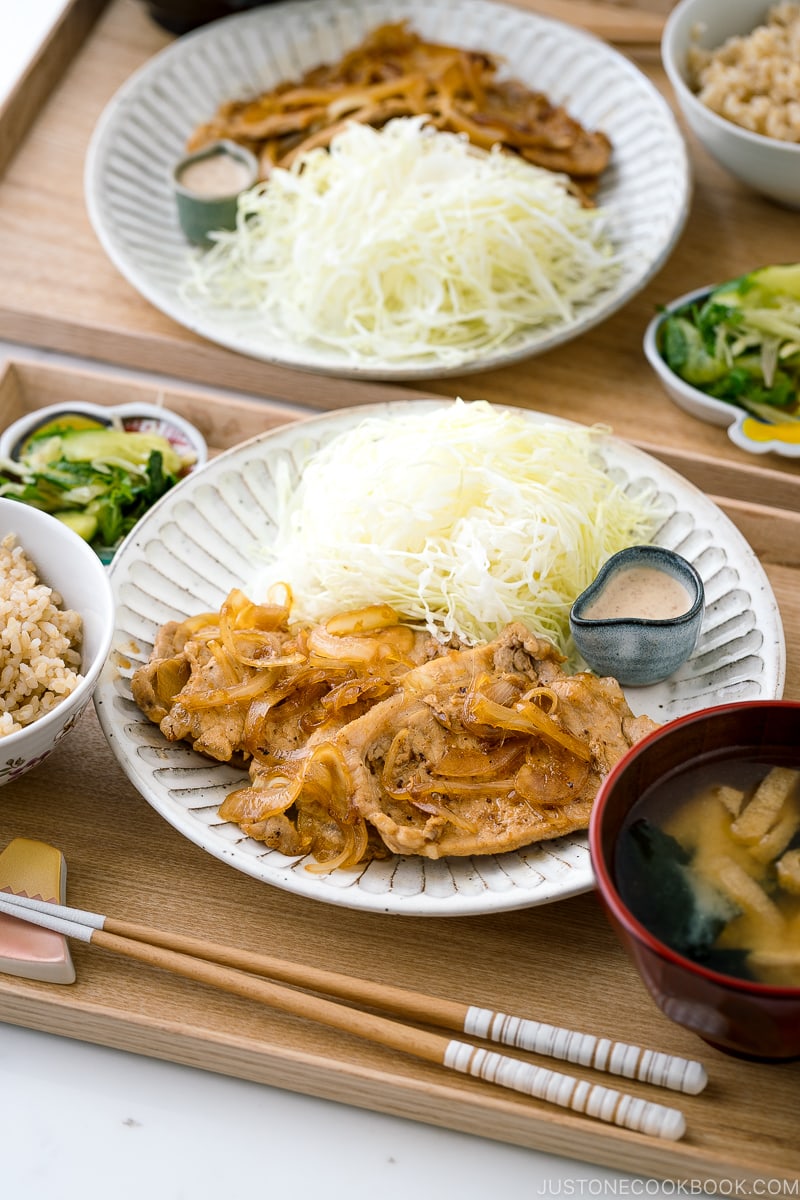
Ginger Pork, or what we call Shogayaki (生姜焼き), is a homey Japanese dish. I loved it when I was growing up and still enjoy it very much these days. When I miss home, I’d often cook this for our family dinner and for the kids’ bento lunches.
The tender, juicy pieces of pork coated in a sweet gingery sauce, and served over rice? Pure comfort food. Today I’ll show you how to make this popular mom-style food at home.
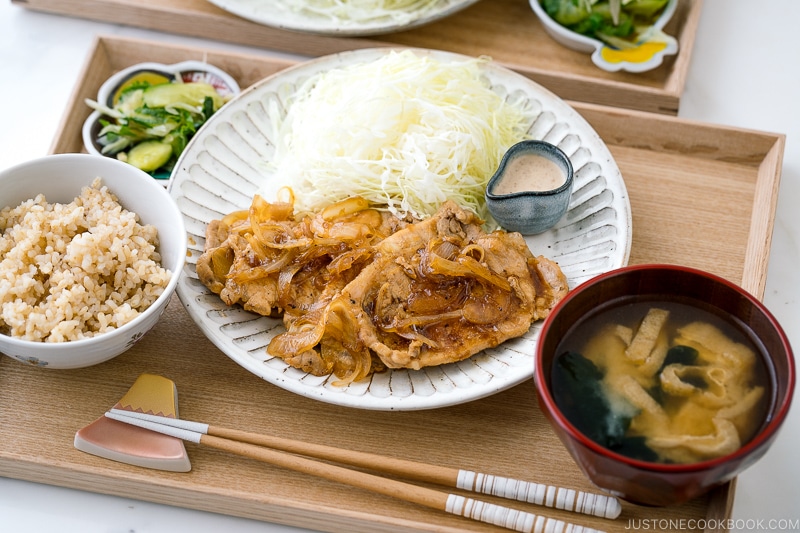
What is Ginger Pork?
In Japan, we call this dish Shogayaki (生姜焼き). Shoga (生姜) means ginger and yaki means grill or fry. Here, we cook thinly sliced pork with soy sauce, sake, and mirin along with ginger.
Each family makes their ginger pork slightly different so you’ll find some variations. Some cook it without onion, some make it without any sweetener (no mirin or sugar), some may include garlic, and some may use different cuts of the pork.
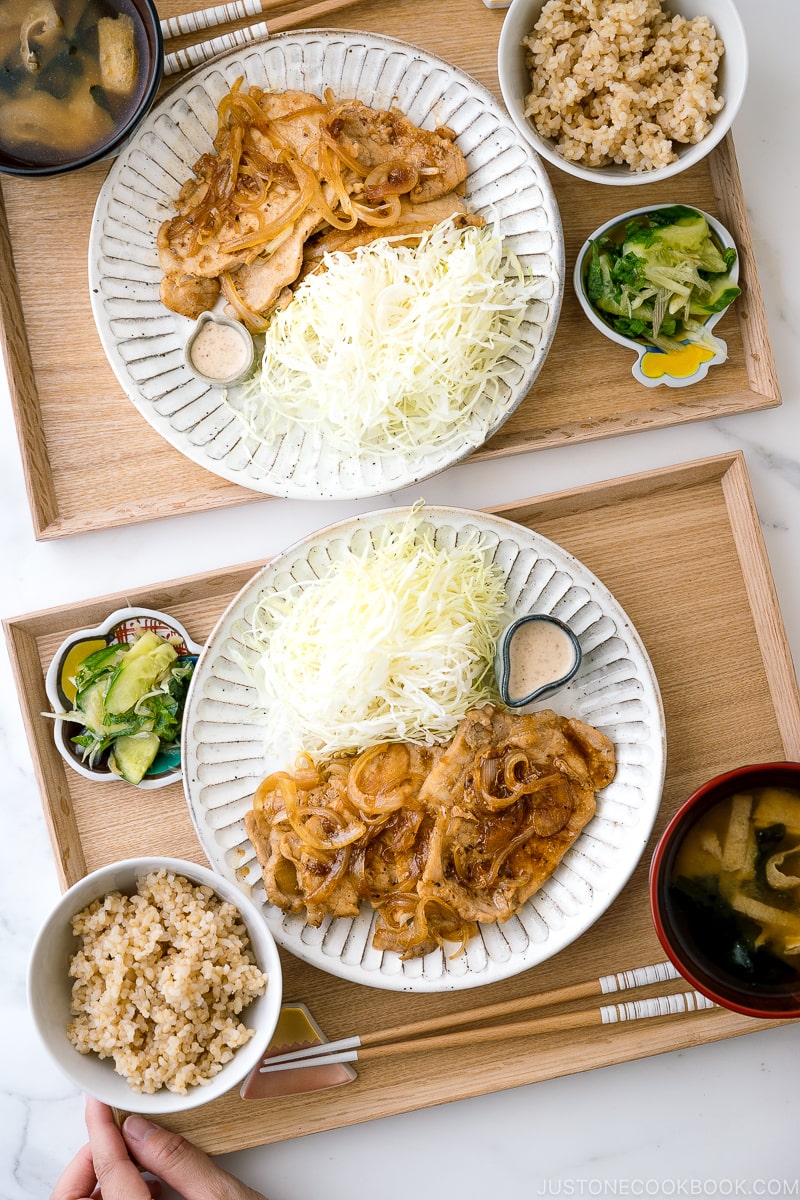
Ingredients for Shogayaki
The detailed recipe is in the recipe card below.
- Thinly sliced pork – You can use other kinds of meat, but in Japan, Shogayaki always refers to a pork dish.
- Flour – This is a new trick I learned to make sure the pork is not dry. More about this later.
- Sake – We always use sake to sprinkle on pork (or other meats) to remove any gamey smell and taste.
- Ginger – Prepare enough ginger as we’ll also be using the ginger juice.
- Ginger Sauce: soy sauce, sake, mirin, sugar, and juice from the grated ginger.
How to Grate Ginger
Grating ginger can be a tedious task, which is why I like to use my Kyocera Advanced Grater that I’ve owned for over a decade and love! It makes grating so much easier and the raised central plate allows the ginger juice to gather to use in Ginger Pork. It’s the best way to grate ginger, in my opinion, and you can get it on Amazon for $30.
How to Cook Ginger Pork
- Make the ginger sauce.
- Pan-fry the pork slices in batches and take them out to a plate.
- Saute the onion until translucent.
- Add the pork back into the pan and pour the sauce.
- Once the meat is well coated with the sauce, transfer to a serving plate. Enjoy!
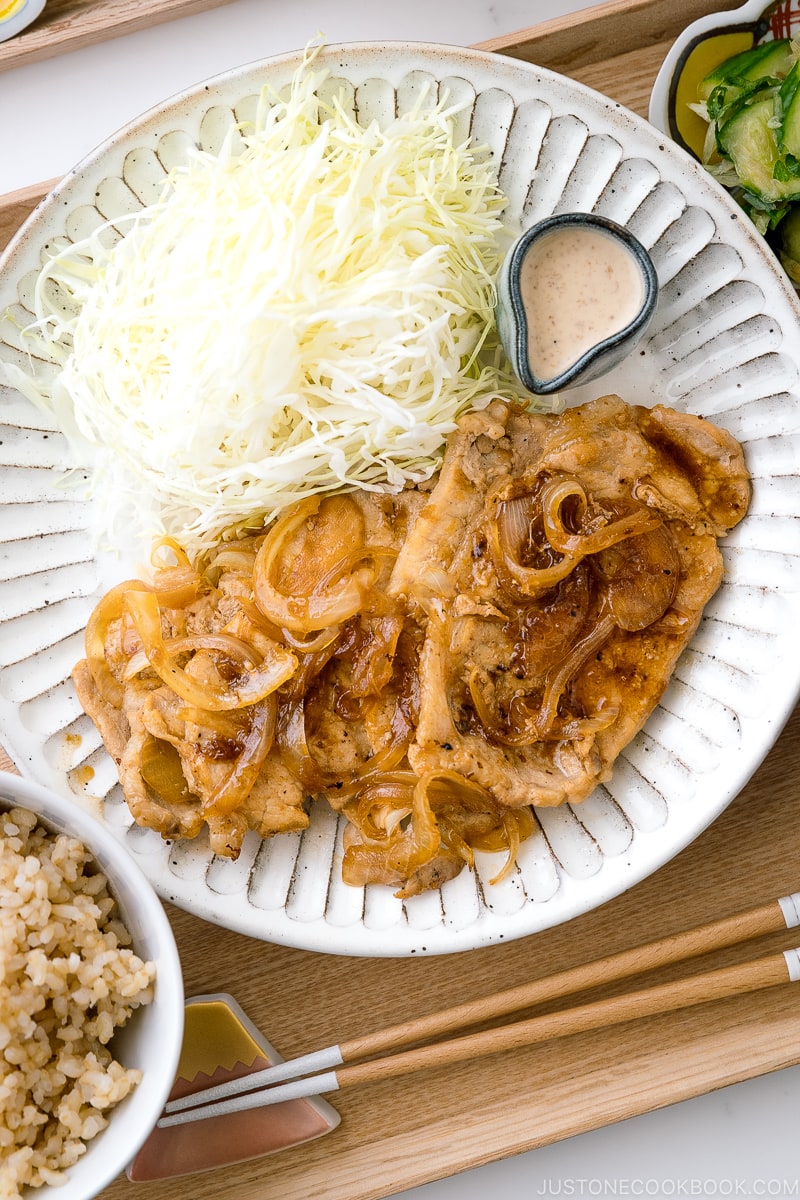
Cooking Tips to Make Juicy Ginger Pork
The biggest challenge with cooking pork is the meat can get dry and tough easily. Over the years, I’ve learned a few tips that help the pork stay moist and tender.
1. Use good-quality pork
The quality of the pork makes a huge difference, and I have to mention this first.
There are two types of thinly sliced pork cut in Japan that are used for ginger pork: the first one is pork loin or pork chop, and the other one is country-style pork ribs (this post explains the cut in detail).
It’s up to your preference, but the country-style pork ribs have nice fat in the middle so it yields juicy meat.
2. Use thinner (⅛ inch or 3 mm-thick) pork
You can get a conveniently sliced and packaged “Ginger Pork Cut” at Japanese grocery stores. This cut is pork loin (pork chop), not country-style pork ribs.
Asian grocery stores may carry thinly sliced pork for hot pot. These “hot pot” pork slices are thinner than the ones we use for ginger pork. I personally do not mind these thin pork slices but keep in mind that you can’t “sear” paper-thin pork slices. The sliced meat will shrink and curl up (which is ok!) but it will be more of a stir-frying style.
If you don’t live near a Japanese market or Asian market, you can easily slice your own meat (follow my tutorial). Make sure your slice is less than ⅛ inch (3 mm). Thick pork slices get chewy and tough.
3. Make slits
It’s very important to make several slits on the connective tissue (white area) between the meat and fat. Red meat and fat have different elasticities, and when they are cooked, they will shrink and expand at different rates. These slits will allow the pork slices to stay nice and flat when pan-frying and prevent them from curling up.
If you don’t make slits, the sliced pork tends to curl up and it takes a longer time to cook evenly while other parts get overcooked.
4. Dust the meat with flour
This is a new trick I learned from my good friend and I’m totally sold by the great outcome, so I’ve been using this method when I make ginger pork.
The role of the flour here is to prevent the pork from releasing the moisture/juice from inside the meat. Oftentimes, thinly sliced pork gets so dry because the moisture is released from the meat as it cooks. The thin layer of the flour also absorbs the delicious ginger sauce, which results in more juicy meat.
Please note: If your pork slices are paper-thin, which is less than ⅛ inch (3 mm) thick, you do not need to dust them with flour.
5. Don’t overcook
The rule of thumb for cooking pork is never to overcook it. When the pork is no longer pink, remove it from the heat as soon as possible, and yes, even when it does not have a nice ideal sear yet. It’s more important to have tender meat than nicely seared meat.
Remember, the remaining heat will continue to cook while cooking the onion, and we will cook the pork again in the sauce; therefore, don’t worry if you think it’s slightly undercooked.
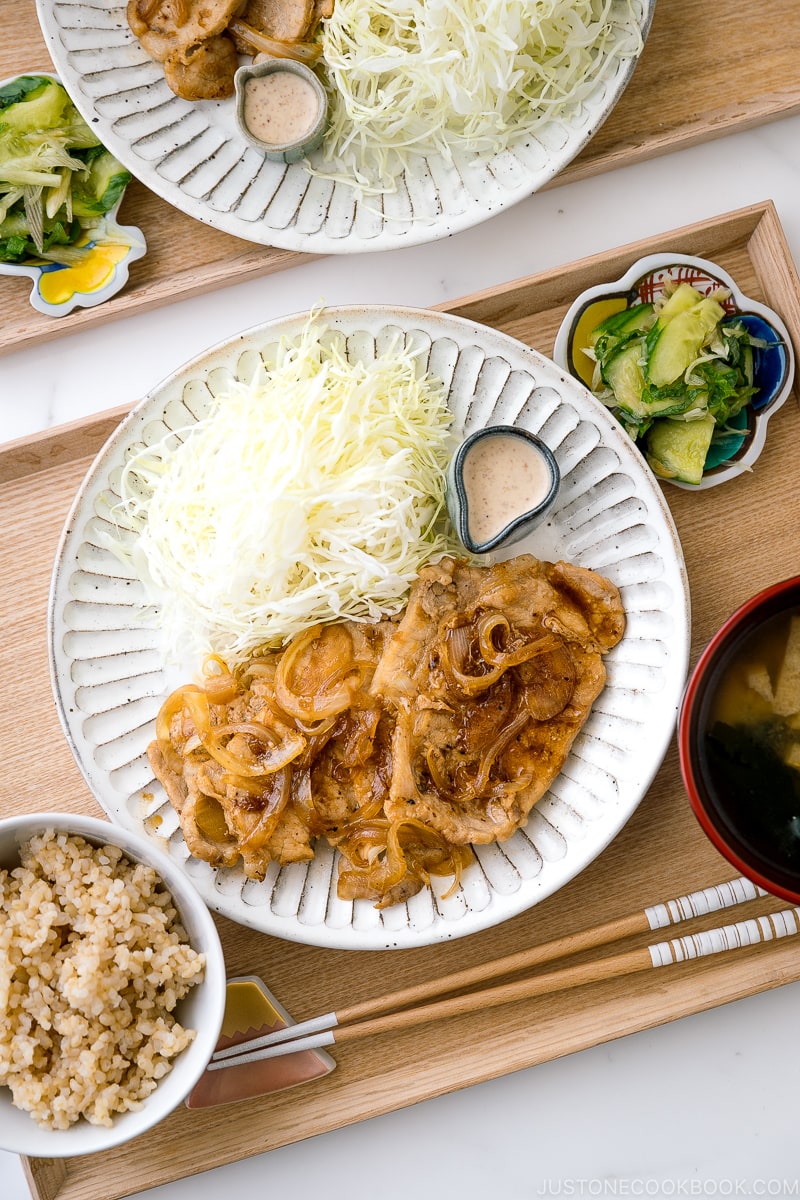
What to Serve with Ginger Pork
You will notice that ginger pork is usually served with thinly shredded cabbage. You can cut the cabbage into thin slices with a sharp knife, or you can use a cabbage slicer as I do. My mom recommended it years ago and I love it!
I love eating the shredded cabbage with extra ginger sauce from the ginger pork. You can serve it with a salad dressing of your choice, such as Japanese Sesame Dressing.
More Delicious Pork Recipes on JOC:
- Asian Pork Chop
- Pan-Fried Ginger Pork Belly from Kodoku no Gurume
- Tonkatsu
- Tonteki
- Honey Garlic Pork Chops
- Miso Pork and Eggplant Stir-Fry
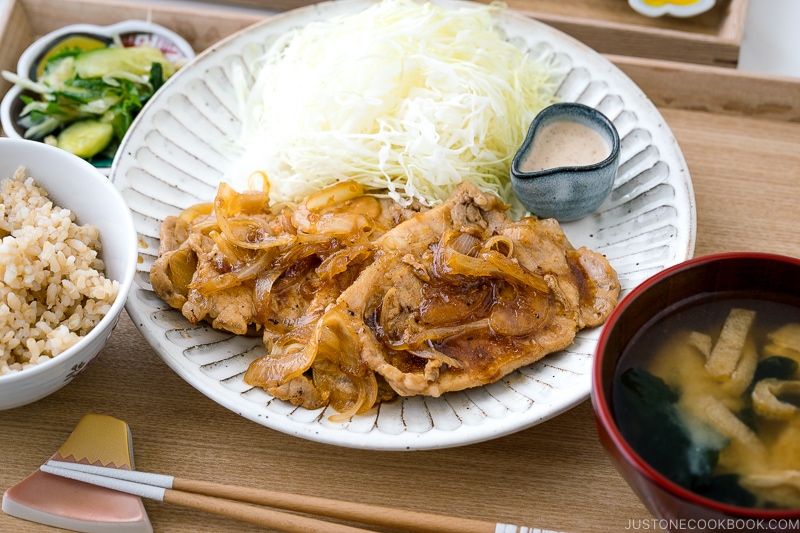
Wish to learn more about Japanese cooking? Sign up for our free newsletter to receive cooking tips & recipe updates! And stay in touch with me on Facebook, Pinterest, YouTube, and Instagram.
Ginger Pork (Shogayaki)
Ingredients
For the Ginger Sauce
- 2 Tbsp soy sauce
- 2 Tbsp mirin
- 2 Tbsp sake
- 1 tsp sugar
- 1 Tbsp ginger juice (divided; grated and squeezed from 2-inch, 5-cm knob; use the other half for marinating the pork)
- 2-3 tsp ginger (grated; leftover from juicing the ginger; optional, to taste)
- ½ onion (grate 1 Tbsp with juice for ginger sauce; use the rest to slice and stir-fry later)
For the Shogayaki
- ¾ lb thinly sliced pork loin (I use paper-thin sliced pork from a Japanese grocery store; or slice your own meat)
- 1 Tbsp sake
- 1 Tbsp all-purpose flour (plain flour)
- 1-2 Tbsp neutral oil
- freshly ground black pepper (optional)
Instructions
- Gather all the ingredients.
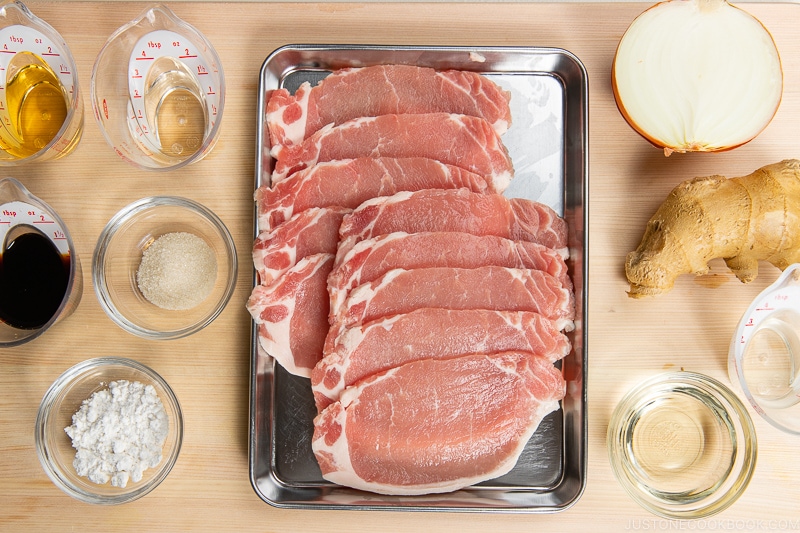
To Make the Ginger Sauce
- In a small bowl, combine 2 Tbsp soy sauce, 2 Tbsp mirin, 2 Tbsp sake, and 1 tsp sugar for the ginger sauce.
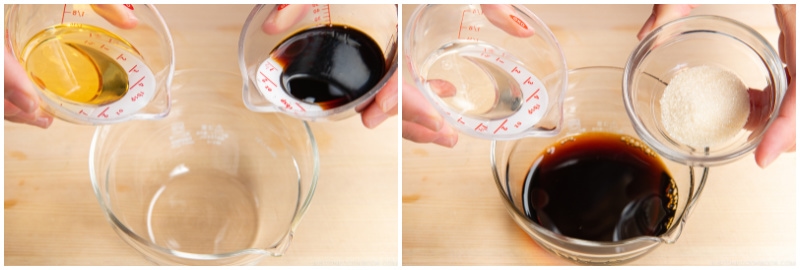
- Scrape off the outer ginger skin with a knife (or spoon) and cut off any tough parts.
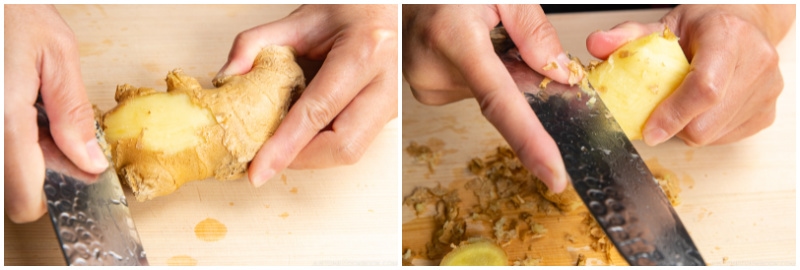
- Using a grater (I use a ceramic grater that I love), grate the ginger, keeping the juice. Collect the grated ginger and squeeze 1 Tbsp ginger juice. Divide the juice. (Reserve the other half of the juice to marinate the pork later.)
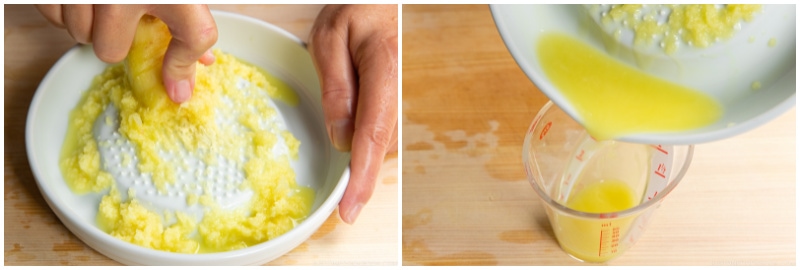
- Add half of the ginger juice to the sauce bowl. Then, add as much of the leftover grated ginger (optional) as you like to the sauce. My family likes a strong ginger taste, so we add about 2-3 tsp ginger, grated.
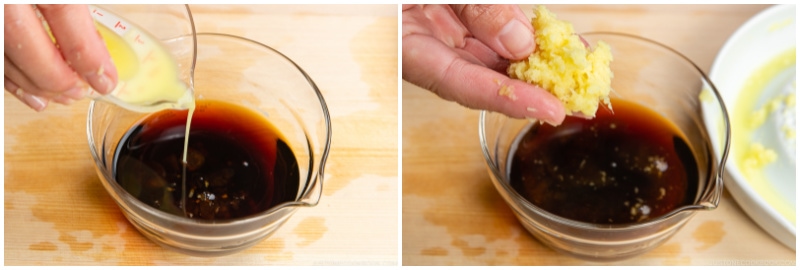
- Next, grate ½ onion until you get 1 Tbsp grated onion with juice. (Use the remaining onion to stir-fry later.)
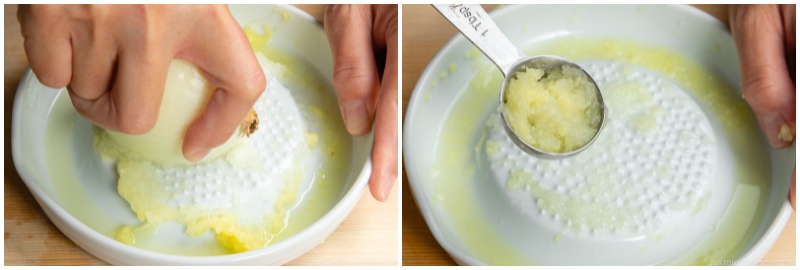
- Add the grated onion with juice to the ginger sauce and mix it all together.
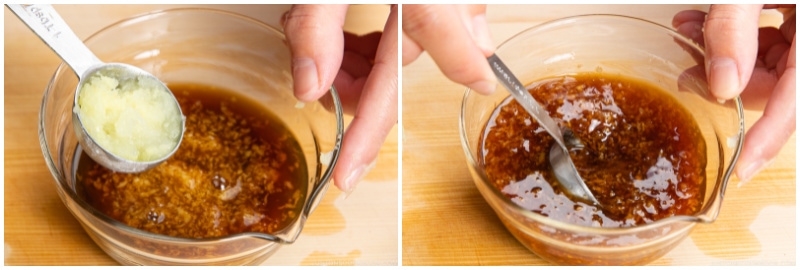
To Prepare the Ingredients
- Cut the rest of the ½ onion into thin slices.
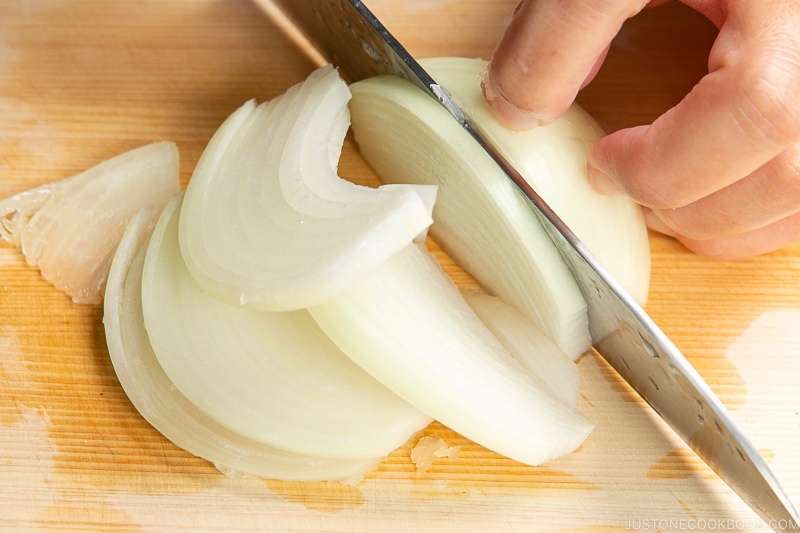
- Now, prepare ¾ lb thinly sliced pork loin. If your pork slices are thicker than ⅛ inch (3 mm), cut several slits on the connective tissue (the white area) between the meat and fat. Red meat and fat have different elasticities, and they will shrink and expand at different rates as they cook. These slits will allow the pork to stay flat while pan-frying and prevent it from curling up.
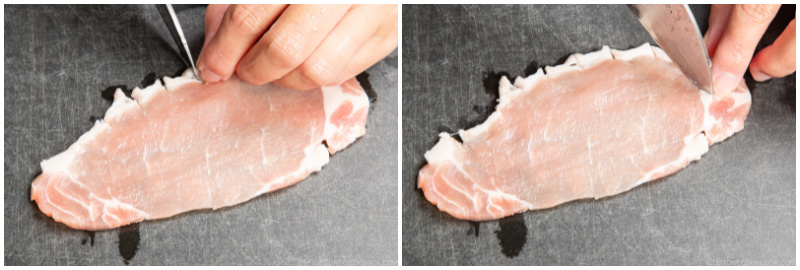
- Sprinkle the other half of the ginger juice and 1 Tbsp sake on the pork slices. Set aside for 5 minutes. Tip: Sake and ginger juice helps to remove the pork‘s gamey odor.
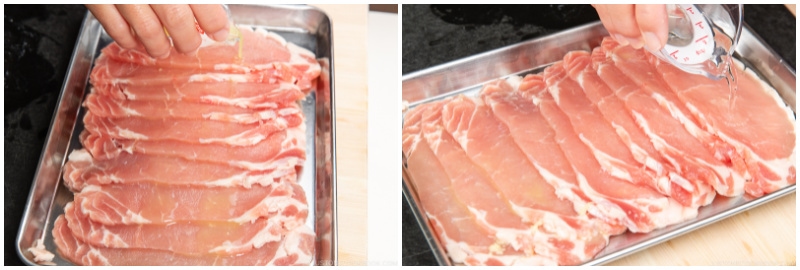
- When you‘re ready to cook the pork slices, lightly sprinkle them with 1 Tbsp all-purpose flour (plain flour). If your pork slices are paper thin—less than ⅛ inch (3 mm) thick—you do not need to dust with flour. Tip: Dusting with flour prevents the pork from drying up and keeps the juices inside the meat.
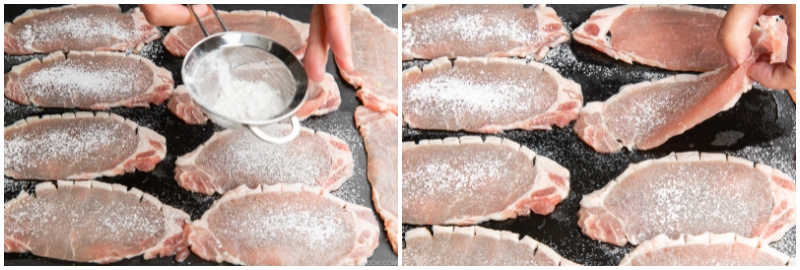
To Cook the Pork
- Preheat a large frying pan over medium-high heat. When the pan is hot, add 1-2 Tbsp neutral oil. Then, add the pork slices in a single layer, turning them over once the bottom is golden brown. Cook in batches so the meat sears properly; you don‘t want to steam the pork in an overcrowded pan.
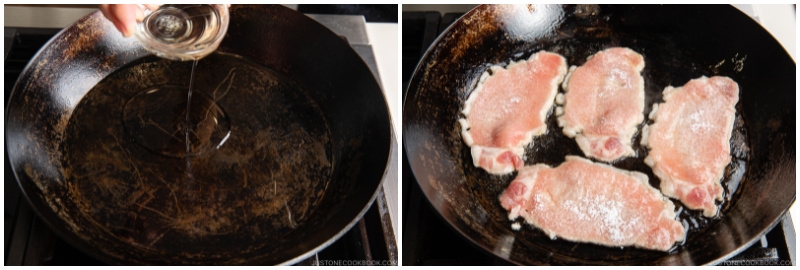
- When the pork is no longer pink, transfer to a plate. Make sure not to overcook the pork at this stage as we will continue to cook it in the sauce later.
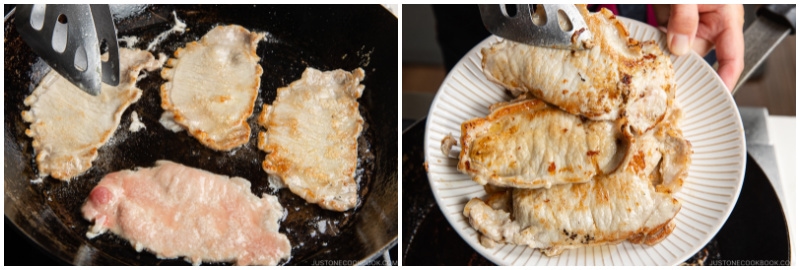
- Once you‘ve removed the pork, add more oil to the pan (especially if your pan is not non-stick) and add the onion slices.
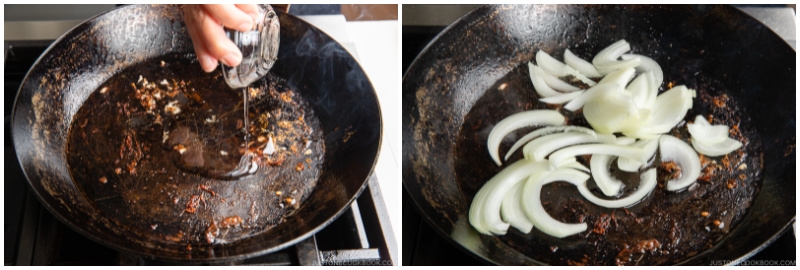
- Sauté the onion slices on medium heat until golden brown, about 6–8 minutes. When the onion slices are tender and translucent, add the pork back to the pan.
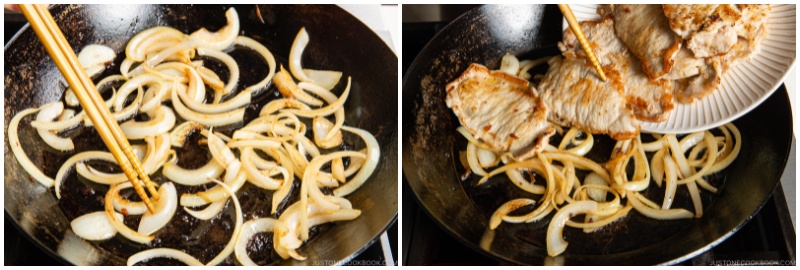
- Stir the sauce one last time to make sure the sugar is not at the bottom of the bowl and pour it over the pork. Bring the sauce to a simmer and spoon it over the pork for about 2 minutes. Season with freshly ground black pepper to taste (optional).
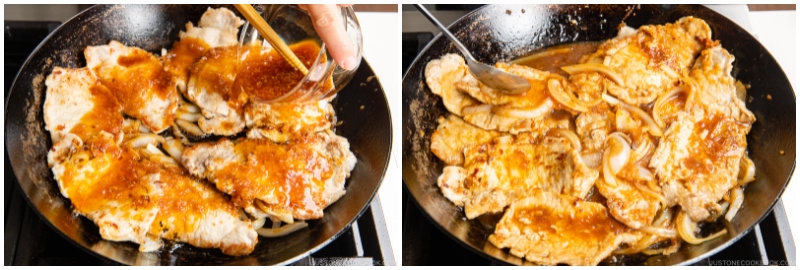
- When the sauce has thickened, the Ginger Pork is done. Transfer it to a serving plate and enjoy.
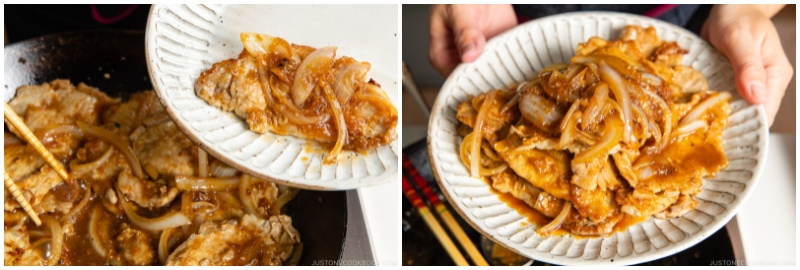
To Serve
- We often serve Ginger Pork with thinly shredded cabbage. I use a cabbage slicer to shred it finely. I love eating the shredded cabbage with extra ginger sauce from the ginger pork, or serve it with a salad dressing of your choice, such as Japanese Sesame Dressing.
To Store
- You can keep the leftovers in an airtight container and store in the refrigerator for up to 3 days or in the freezer for a month.
Nutrition
Did you make this recipe?
Tag @justonecookbook on Instagram so we can see your delicious creation!
Editor’s Note: The post was originally published on June 20, 2011. The images and blog content have been updated and a new video is added in September 2021.


